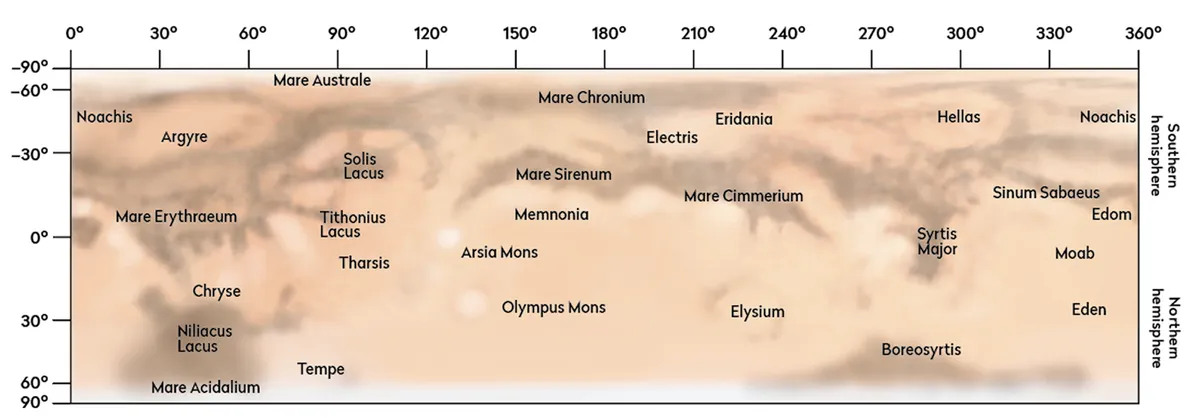Olympus Mons is a volcano on Mars and is the largest volcano we know of in the solar system.
Olympus Mons is located in the western hemisphere of Mars, near the Martian equator. Mars It is higher than Earth’s global datum (equivalent to “sea level” on a waterless planet) and in places towers up to 26 km above its surroundings.
By comparison, on Earth, Mount Everest stands about 5.5 miles above sea level, while the world’s tallest volcano, Nevados Ojos del Salado in Chile, is just 4.2 miles high.
Not just tall, but big
Mount Olympus is not only tall, but also wide.
In fact, its surface area is approximately 300,000 km2.2 (120,000 square miles) – roughly the size of Poland or Italy.
That’s because Olympus Mons is a shield volcano, like the volcanoes that make up the Hawaiian Islands.

This means that the volcano has a wider, flatter shape (like a warrior’s shield lying on the ground) rather than the cinder cone, lava cone, or lava dome that you probably immediately think of when you hear the word “volcano.”
Shield volcanoes form when very fluid, low-viscosity lava oozes through cracks in the planet’s surface, which tends to spread farther and faster than the more viscous lava found in other types of volcanoes.

Why is it so big?
Olympus Mons is at the center of a volcanically active region called the Tharsis Mountains.
This activity is not caused by the movement of tectonic plates (Mars is too small for them to exist), but rather by the presence of huge magma hotspots just below the surface.
This is what enabled the volcano to reach its enormous size.

Volcanic activity on Mars does not fluctuate over time as a result of plate tectonics, so layers of lava have built up in one place over millions of years, but for the past 25 million years or so, this volcano on Mars has been dormant.
Martian volcanoes are visible as albedo features (bright areas) when viewed through telescopes from Earth and have traditionally been called Nix Olympica (Latin for “Olympic Snow”).
Astronomers had long suspected that this was a mountainous region. NASA’s Mariner 9 A spacecraft spotted the formation in 1971, and Olympus Mons was given its present name.
In Latin, the name means “Mount Olympus.”
And in 2024, according to one study Mars’ equatorial volcanoes contain enough frost to fill 60 Olympic swimming pools.


